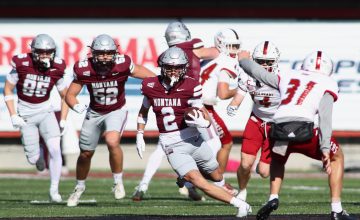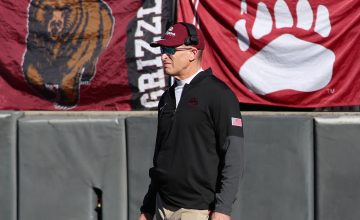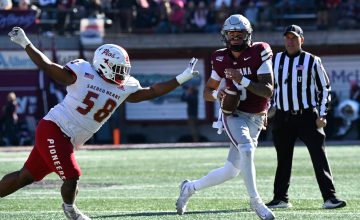BOZEMAN, Montana — During his 22 years working in Special Operations for the United States Military, Lt. Col. Phil Kornachuk engaged in dozens of covert missions and combat deployments.
Since retiring from the military, Kornachuck has engaged on a mission to teach value-based leadership in a variety of ways, including in his endeavor Lead 406.
For three years, Kornachuck worked with the Montana State University football team each off-season to help them build a leadership council and grow closer as a collective group. The tactical training the Bobcats would engage in challenged the fortitude and fitness of the young men, but also the aptitude and ability to communicate during highly stressful, complicated situations.
In the summer of 2018, the Bobcat football team seemed like one approaching a tipping point. The Jeff Choate era began in struggle, losing seven of its first nine games under the first-time head coach, including six straight in Big Sky Conference play to finish the 2016 season.
But 2017 included five victories, including a second straight over rival University of Montana and the Bobcats took serious momentum into the off-season. Choate knew he wanted and needed Troy Andersen, now a linebacker for the Atlanta Falcons, to be a leader of the group. He hoped upstart quarterback Chris Murray could mature into a quintessential signal caller, a desire that never came to fruition.
As Montana State engaged in its first Lead 406 training, Kornachuck helped point out a different potential leader to Choate. And it wasn’t the first time Ty Okada had caught his head coach’s eye. But to hear the adoration come from a decorated career military man like Kornachuck left an indelible impression on Choate.
“The Colonel comes up to me after our training and says, ‘I don’t know what Ty Okada is going to do, but Ty Okada should join the special forces,” said Choate, who’s now the defensive coordinator at Texas, chuckling as he remembered the moment with great pride in his former player. “This is coming from a guy who’s been on 18 combat deployments, one of the most decorated guys in the entire United States Military and he says, ‘That kid right there needs to be in our special forces unit.’
“Wow. That’s a different level of mental ability and aptitude, right? That’s who he is.”

Okada, a former high school wrestler and quarterback from Woodbury, Minnesota, had already made a name for himself during his redshirt season in 2017. He was named Montana State’s Young Gun Award thanks in part to his ability to outlast any teammate in any competition, largely because of his mental fortitude.
That unbreakable mentality has led Okada to the brink of a new frontier many doubters thought he would never reach years ago when he first arrived at MSU six years ago: the doorstep to the NFL.
“Ty is so very, very mentally tough, trains his butt off and never, ever quits” Choate said. “Unfortunately, he has had some injuries that have probably held him back from reaching the peak of his physical performance but that’s never held back his performance in every other aspect of his life. Tremendous leader, super high football IQ, total grinder, does everything right, what a Bobcat should be.”
To see Okada absolutely blow the doors off his NFL Pro Day in early April of this year, you’d never know that once upon a time he was a 160-pound walk-on who basically had to recruit himself to Montana State.
With scouts from about a quarter of the NFL’s 32 teams in attendance, Okada set the morning of April 5 on fire, not only confirming that his professional football aspirations are indeed real but, like he had so often during his standout career for the Bobcats, igniting his teammates.
The nervous vibe that typically accompanies pro days permeated the Bobcat Athletic Complex weight room early on as draft-eligible Bobcats went through their initial tests. That changed when Okada damn near hit his head on the ceiling during the vertical jump.
The 5-foot-10 1/2, 193-pound defensive back exploded 40.5 inches, landing with authority and letting out a feral scream that sent onlookers into a raucous cheer. Then the entire group of aspiring professional athletes found their groove — accomplished players like linebacker Callahan O’Reilly and cornerback James Campbell, each of whom improved their NFL chances with the added adrenaline bump.
#MSUBobcatsFB’s Ty Okada just jumped a vertical of 40.5 👀
— Ashley Washburn (@ashleyjwashburn) April 5, 2023
If he competed at the #NFLCombine, that measurement would have tied him for THIRD in safeties and NINTH overall. pic.twitter.com/FCKBQjWinf
It was Okada, though, who stole the show. He followed up the elite vertical — his 40.5 inches would’ve been the second-best mark among all defensive backs at this year’s NFL combine — by running 4.42 and 4.44 seconds, respectively in the 40-yard dash. Check, check, check. Anyone who said Okada wasn’t explosive enough or fast enough to play professional football was eating crow.
Then for good measure, Okada went out and achieved perhaps his most impressive feat: he bested Troy Andersen in an athletic test. According to his Relative Athletic Score (RAS), Andersen’s performance at the 2022 NFL Combine ranked among the best… ever. As in best ever in the history of the NFL Combine.
At 6-foot-4, 246 pounds, Andersen ran 4.42 seconds in the 40, soared 38.5 inches in the vertical leap and ripped off a broad jump of 10 feet, 8 inches.
Okada broad jumped 10-foot-9, capping a truly jaw-dropping Pro Day that ranks up there with any NFL hopeful coming out of the Treasure State in the 21st century.
“For me, today was all about visualization,” Okada said just a few hours after completing his Pro Day. “The best part about Landow (Sports Performance in Denver where he trained) was they have mental performance coaches and they harped on every single day, I’m talking for three months, I would visualize myself, what is it going to look like when I’m underneath that vertical jump, what it’s going to look like when I’m lined up at the start of my 40 and you have scouts at the end of it with their clocks out.
“Those are nerve-racking things but if you are disciplined and your visualization, you do that every day, it felt like another day of training and that made it that much easier to hit the marks that I did.”
Despite his knack for diagnosing what’s happening on a football field and his sharp intellect paired with a wrestler’s mentality, Okada had to wait his turn during his high school days at East Ridge in Woodbury, Minnesota outside of Minneapolis. East Ridge is a 6A high school, so very few football players went both ways. And Okada had always had a natural affinity, especially from a leadership perspective, for playing quarterback.
Okada backed up Seth Green for most of his prep career. Green was a four-star quarterback recruit who committed to Oregon before eventually finishing his college career as a tight end at the University of Houston. He played the 2022 season with the Houston Texans.
Okada’s junior year, a “talented kid from Raleigh, North Carolina transferred in ahead of me.
“I wanted to play defense my junior year so I could play varsity but that just didn’t happen,” Okada said. “I was the backup quarterback and I patiently waited.”

While he waited his turn under center, he kept thriving on the wrestling mat and the baseball diamond. He was a sectional champion in wrestling, the first ever from East Ridge High, and an all-conference performer in baseball.
During his senior year of football, he got his chance as a signal caller and was the district’s offensive player of the year. Not that he was much of a pure quarterback looking back.
“When I played quarterback, I would sit back in the pocket and if my best buddy who played tight end wasn’t open, I’d just run it,” Okada said with a laugh. “I’m not going to lie to you and say I was over there breaking down defenses. I was short. I had zero pocket awareness. I felt like if I was in the pocket for more than two seconds, I was pulling the ball down and running it.
“But for me, the transferable skills are the leadership because everyone is looking at you as the quarterback.”
That mentality then carried Okada to bet on himself. By the time his senior year was ending, he had Division III offers to wrestle and play baseball. He field a few Division II offers for football from in-state Minnesota schools. But he had his mind set on Division I.
Okada knew a few coaches at Woodbury High, East Ridge’s rival. Okada had already been accepted to Montana State academically and was drawn to Bozeman because of the beauty, the Jake Jabs business school and a D-I football program on the rise. Okada knew that the Woodbury coaches had connections to Ty Gregorak, Montana State’s defensive coordinator at the time and MSU’s primary Minnesota-area recruiter.
As is his personality, Okada went all in, sending his film to Gregorak and former MSU defensive backs coach Kyle Risinger even though almost all the film featured a 5-foot-10 running quarterback who was certainly not Division I caliber.
Once Okada earned a walk-on spot with Montana State, he was determined to prove he belonged.
During the fall of 2017, Choate sometimes worried about Okada. That is, until he realized the kid from Minnesota had an unbreakable spirit.

“I can remember his redshirt year and we used to do these game-day lifts with our freshmen and it was basically, try to break them,” Choate said. “We would do these competitions at the end. It was like fight to the death type stuff, right? And I remember being in the weight room watching what was going on.
“We would bracket these guys out but sometimes, Ty would end up against a huge offensive or defensive linemen. These guys would go take downs. It would be best out of 10 or 11. And this guy (Okada) pushed himself so hard that he collapsed. I thought for a minute he was dead. Then he got back up. And then he got back up again.
“He would not quit. He would simply not quit. He had no quit in him. And at that moment, I knew that guy had something special.”
During the 2018 regular season, Okada affirmed his Young Gun status by becoming an elite gunner on special teams for the Bobcats. But the question of what position the then 5-foot-10, 160-pounder would play at MSU still remained.
He’d worked with the corners most of the fall and showed a great ability to tackle in space as well as jam wide receivers at the line. He also showed he could run with wideouts more often than not. But Okada’s best traits were his toughness and his ability to diagnose the big picture when it came to opposing offenses.
Montana State won the 2018 regular-season finale against its rival Montana in one of the most thrilling finishes in Brawl of the Wild history. The storybook ending — which some in the Treasure State deem “the Miracle in Missoula” — marked the third straight time the Bobcats had defeated the Grizzlies.
Miracle in Missoula documentary
The goal line stand led to MSU’s seventh victory and an at-large bid in the FCS Playoffs, the first postseason appearance of the Choate era and the first by Montana State since 2014. But that brutally violent edition of the Brawl took its toll on the Bobcats.
Defensive linemen Tucker Yates, Chase Benson, Bryce Sterk and Derek Marks were all limited or unavailable for the following week’s first round playoff game. The Bobcats drew Incarnate Word, an upstart program from Texas who made no bones about wanting to throw the football all over the yard.
So Choate, Gregorak and the Bobcat defensive coaching staff threw in a new wrinkle with a new nickel back: Ty Okada. And just like that, the walk-on found his spot in the starting lineup and found his ideal position.

“Don’t tell my parents this, but I didn’t go to class that week,” Okada said with a chuckle. “I just sat in the film room. I bet I spent 18 hours out of the day meeting with Coach Kyle (Risinger) trying to make sure I was as dialed as possible.”
Okada had four solo tackles, broke up three passes and recovered a fumble as MSU limited UIW to 13 first downs on the way to a 35-14 victory, the first playoff win of Choate’s career.
“If we lost that game, it wasn’t going to be because of anything I did,” Okada said. “I was going to make sure of that, that I could come out there and give it my best shot. Definitely, preparing that week was a stressful week and my grades maybe paid for it but in the long run, I think it paid off.”
Entering the 2019 season, Andersen had moved back to Sam linebacker. And because he’s such an athletic freak, MSU had little need for a nickel back in any package. Andersen could just guard slot receivers on passing downs.
The safety room was also flush with talent with first-team All-Big Sky pick Brayden Konkol back for his senior year playing next to Virginia Tech transfer Jahque Alleyne. When MSU did play three safeties, senior JoJo Henderson also roamed the secondary.
Okada was stuck on the depth chart to begin with, then suffered an injury that cost him the first nine games of his sophomore season. He was able to return and play well down the stretch, racking up 15 tackles and three tackles for loss, including four tackles and a TFL in a 48-14 lambasting of the Griz in Bozeman that gave MSU its first four-game rivalry win streak since the 1970s.
Montana State made its first run to the semifinals of the FCS Playoffs since 1984 that fall — its last national championship season — before eventually running into the buzzsaw known as the North Dakota State University Bison.
The global pandemic that derailed and rerouted college sports across America followed. And while not playing during the fall of 2020 was a primary factor in Choate jumping ship to coach in the Big XII, that year-plus of training and internal development did wonders, in some ways, for the Bobcats.

It particularly helped Okada. He was able to finally get healthy. He was able to pack consistent muscle onto his frame, getting up into the 190-pound range before flirting with 200 pounds for the first time in his athletic life.
The time away from game days also allowed Okada’s intellectual, detailed and value-based leadership style to resonate with his teammates. When MSU reemerged to play the 2021 season, Andersen was the absolute alpha dog of the ‘Cats and the Big Sky Conference writ large. But Okada and Daniel Hardy had both emerged as stalwart leaders flanking their unquestioned general.
“I think the thing that makes Ty such a great leader is he is not afraid to say what others are scared to say,” said former MSU linebacker Callahan O’Reilly, himself an NFL hopeful this weekend. “He’s not afraid to get after guys. He’s not afraid to set the tone. You can see it with his play and his passion.
“He plays mean, which is what you have to do when you are playing defense. That really sets the tone for him as a leader.”
During the coaching change, Okada also served as a liaison of sorts, helping ease the transition of the new assistants along with head coach Brent Vigen, who had the unenviable task of taking over for one of the most beloved figures in the history of Montana State athletics.
“Many of the upperclassmen who were here when I got here and the staff got here have been invaluable to me,” Vigen said last season. “Ty has been on the forefront of that. He is such a thoughtful and mature leader who knows how to communicate on different levels with different people.”
And Okada became a star because of his ability to light up a camera, a television hit or a radio segment. His ability to talk with confidence and comfort made him a go-to for media around Montana. It’s all part of his gift.
“He has a really nature ability, and he probably works on it too, ability to communicate with others, with coaches or younger teammates or teammates like myself,” O’Reilly said. “We communicate on the field, things we are seeing, and we are able to communicate that as coaches and the way that it needs to be. He can explain it so well.
“Sometimes, it’s hard to find that balance on how you communicate a certain way with coaches or the media or whoever. He has a great way of doing that with everyone he talks to.”

Finding a position as an affirmed leader helped push Okada’s confidence into the stratosphere. If he could just stay healthy, he knew he would have a chance for a breakout junior season.
And that’s exactly what he did. Okada piled up eight tackles and a tackle for loss as Montana State almost upset Wyoming in Laramie in Vigen’s first game at the helm, which they eventually lost 19-16. The Bobcats wouldn’t lose again for three months.
Okada emerged as Andersen’s right-hand man, moving between strong safety and nickel back, cleaning up anything in his path. He scored his first (and only) college touchdown with a 72-yard pick-six in a 52-10 win over San Diego.
By the end of his junior year, Okada had earned second-team All-Big Sky honors by rolling up 78 tackles, six tackles for loss, two interceptions and breaking up 11 total passes to go with a forced fumble.
Against the Grizzlies, MSU’s streak ended and Okada’s shoulder got dinged, an injury that cost him the second half of that 29-10 loss and most of MSU’s playoff run. He did return for the national championship game and had six tackles in MSU’s 38-10 loss to, guess who… North Dakota State.
Last season, Okada stayed relatively healthy for the duration of the campaign. He compiled 71 tackles, six TFLs, three sacks, broke up nine passes and recovered two fumbles.
For his career, he finished with 179 tackles, 15 TFLs, three sacks, three interceptions, one forced fumble, 18 passes defended, four fumble recoveries and one blocked kick.
It’s the rare athlete who can speak about themselves with confidence and accuracy without coming across as brash or cocky. When asked about the experience doing Special Forces training early in his career, Okada articulated how much that “gave him confidence that he could acutely focus under duress. I was able to prove I could focus on the task at hand.”
Now the task at hand is the culmination of all the adversity Okada has endured. From betting on himself by walking on at a school that didn’t even recruit him to making his name in the weight room, battling through numerous injuries and position changes and jersey number switches, to once again silencing the haters who said he was too small and too slow during his most recent Pro Day, Okada is now on the doorstep of his ultimate dream.

The second round of the NFL Draft begins at 5 p.m. on Friday night. Okada is ranked among the top 25 to 30 safeties available, depending on the scout or analyst. If he is to go, it will almost certainly be on Saturday in rounds 4-7. Like during his pro day and during his biggest moments at MSU, Okada is simply trying to visualize the moment.
“A team that takes me is going to get an athletic, extremely smart, true defensive back,” Okada said. “I showed in my Pro Day numbers that I’m athletic enough where you can put me anywhere. You watch my film, I’m coming off the edge, blitzing, in the box, in the post, playing slot corner, playing outside corner. They are going to get somebody that can do it all and somebody who is going to grind on special teams and be a special teams ace. No matter what team I go to, I’m going to be a special teams standout, I promise you that.
“If someone takes a chance on me, you are going to get a leader and a competitor. I promise you that. It’s not in my nature to accept not being the best at what I do.”


Montana State senior safety Ty Okada (7) walks off the field for the final time/by Miranda Sampson for Skyline Sports 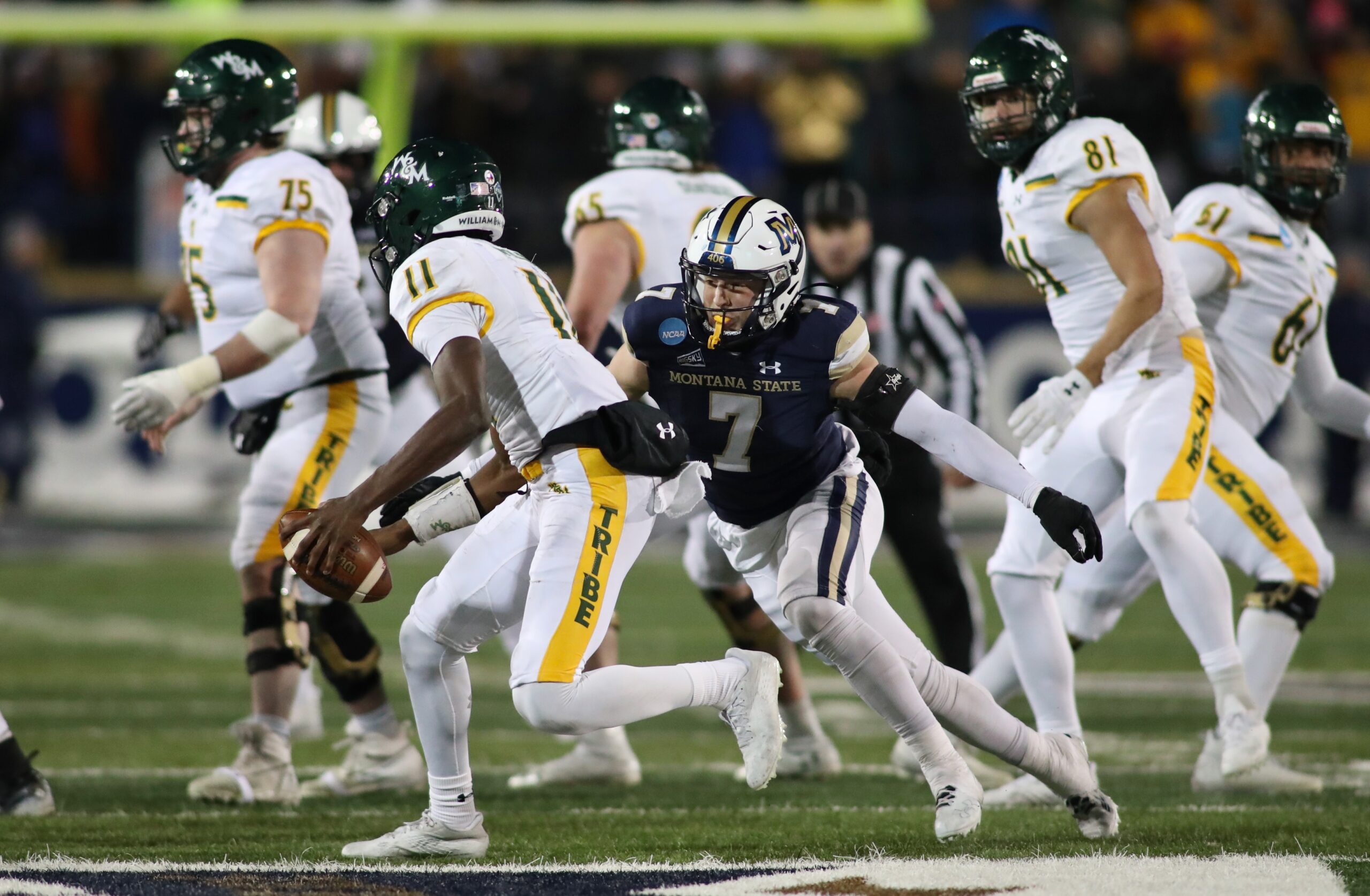
Montana State senior Ty Okada chases down William & Mary QB Darius Wilson 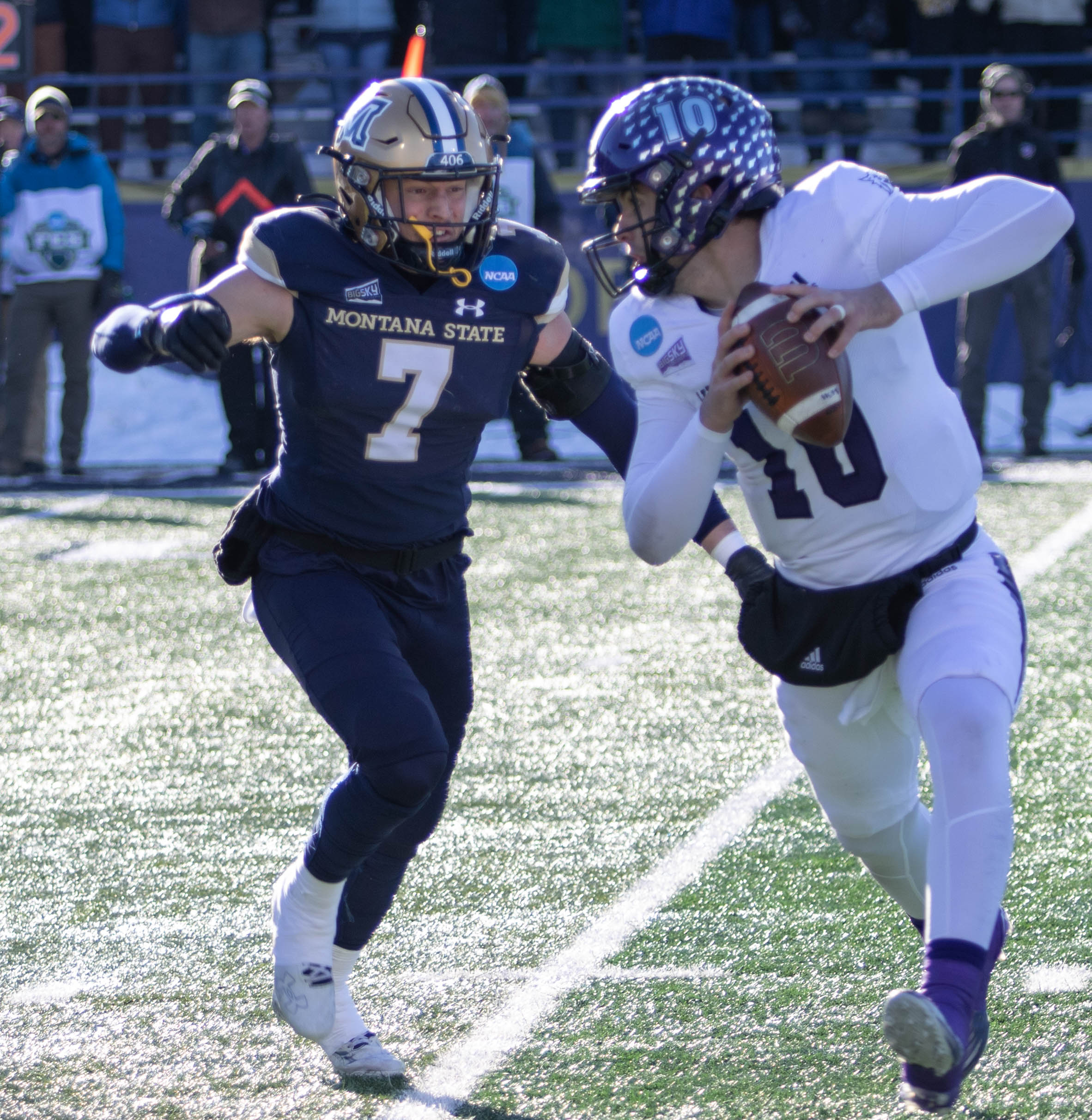
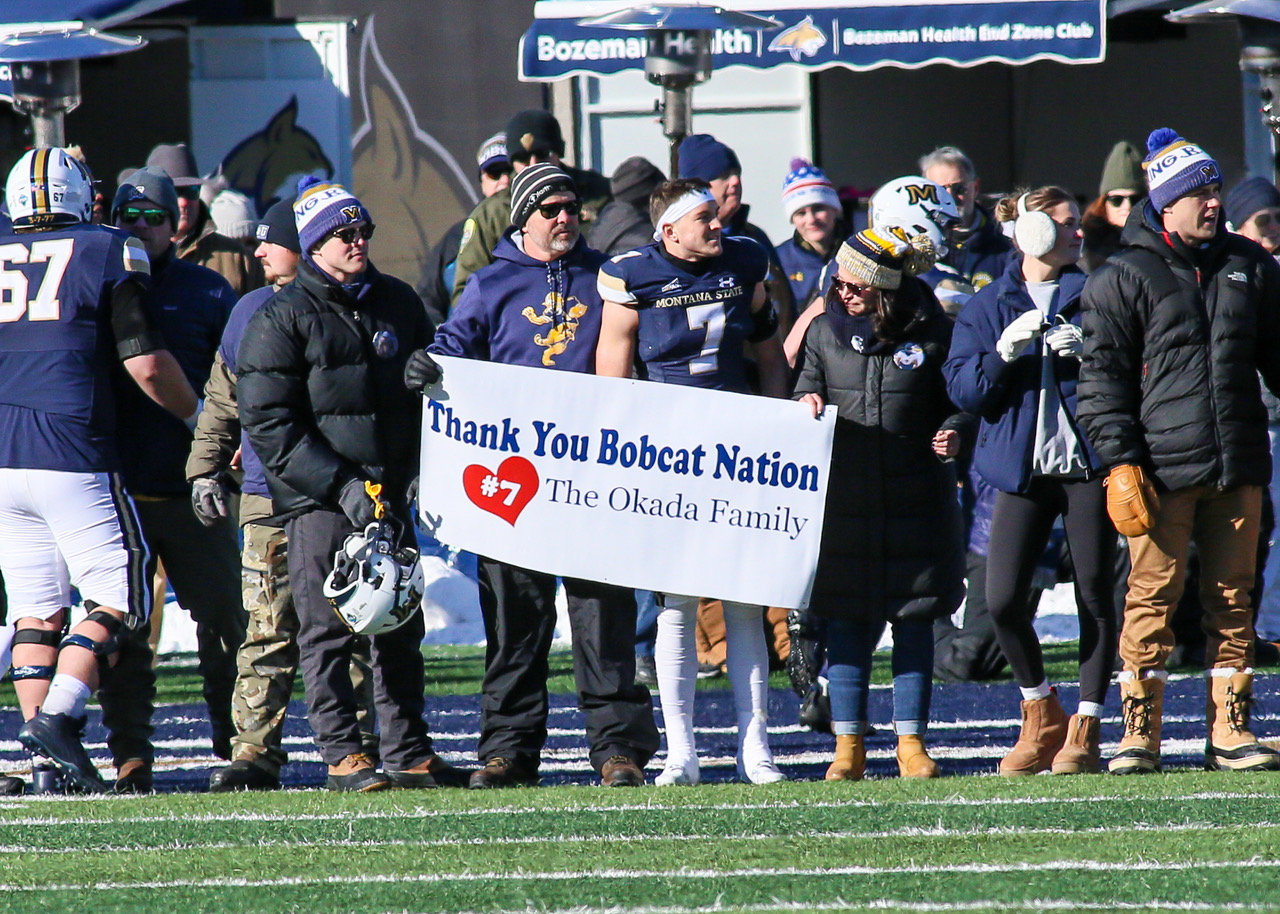
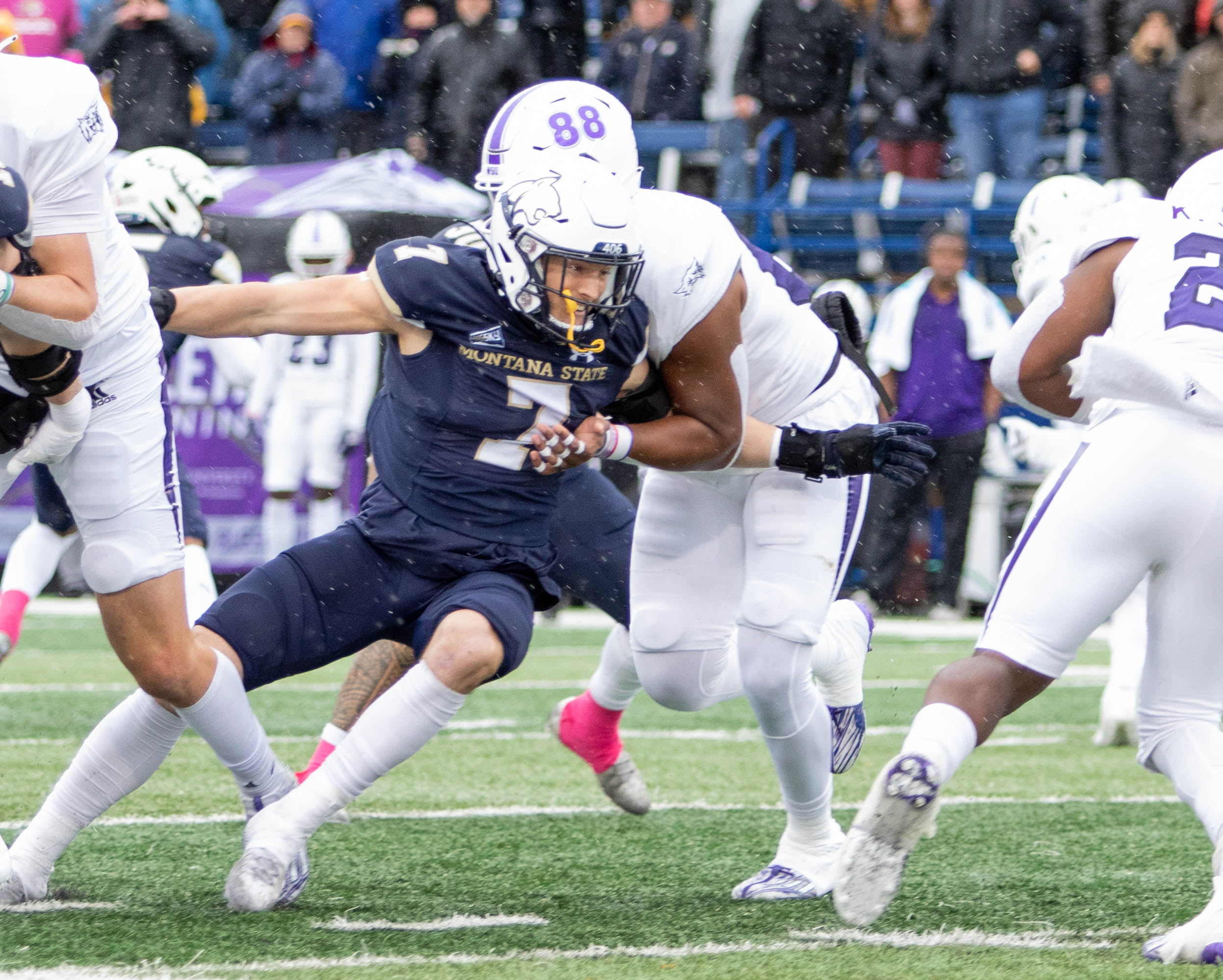
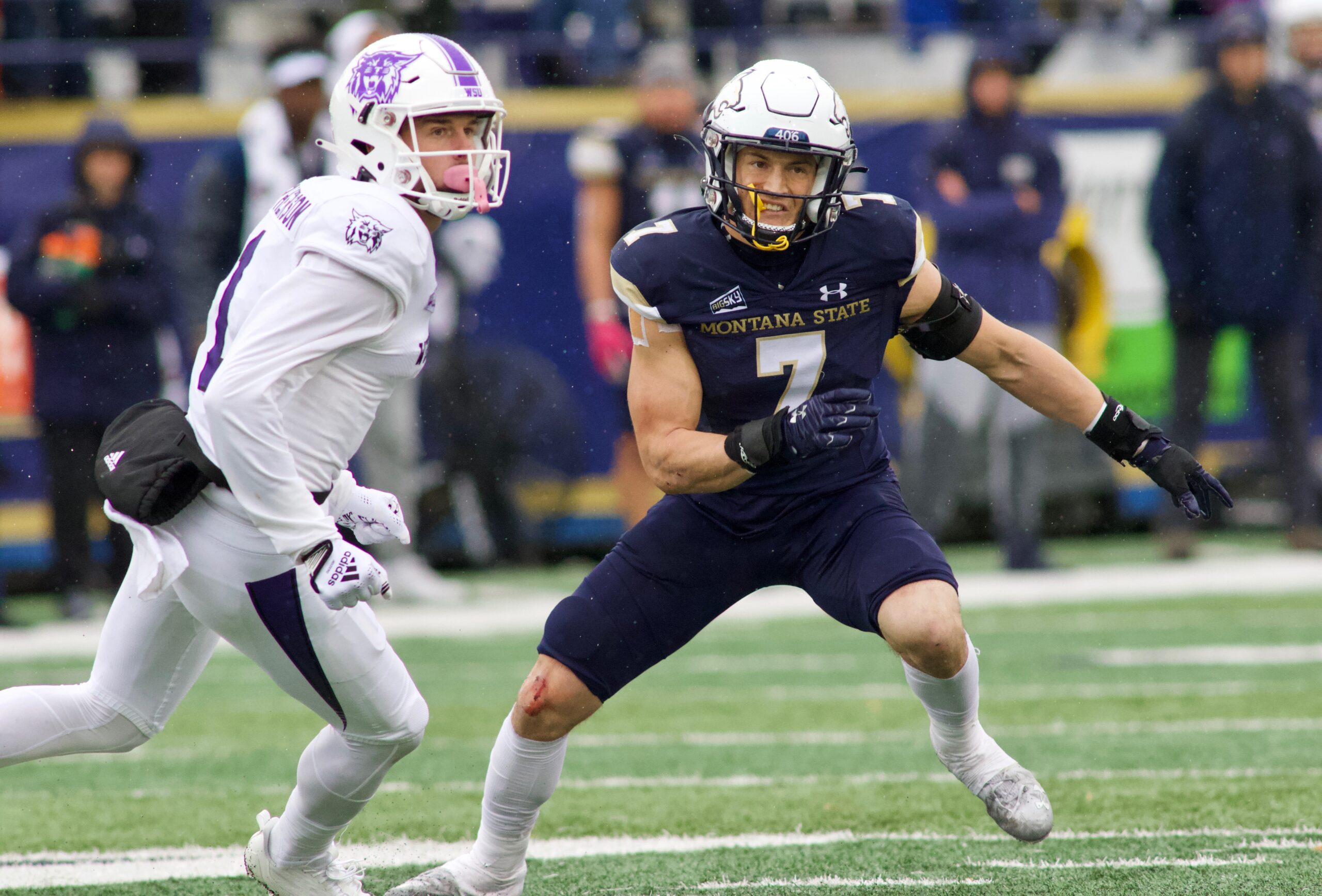
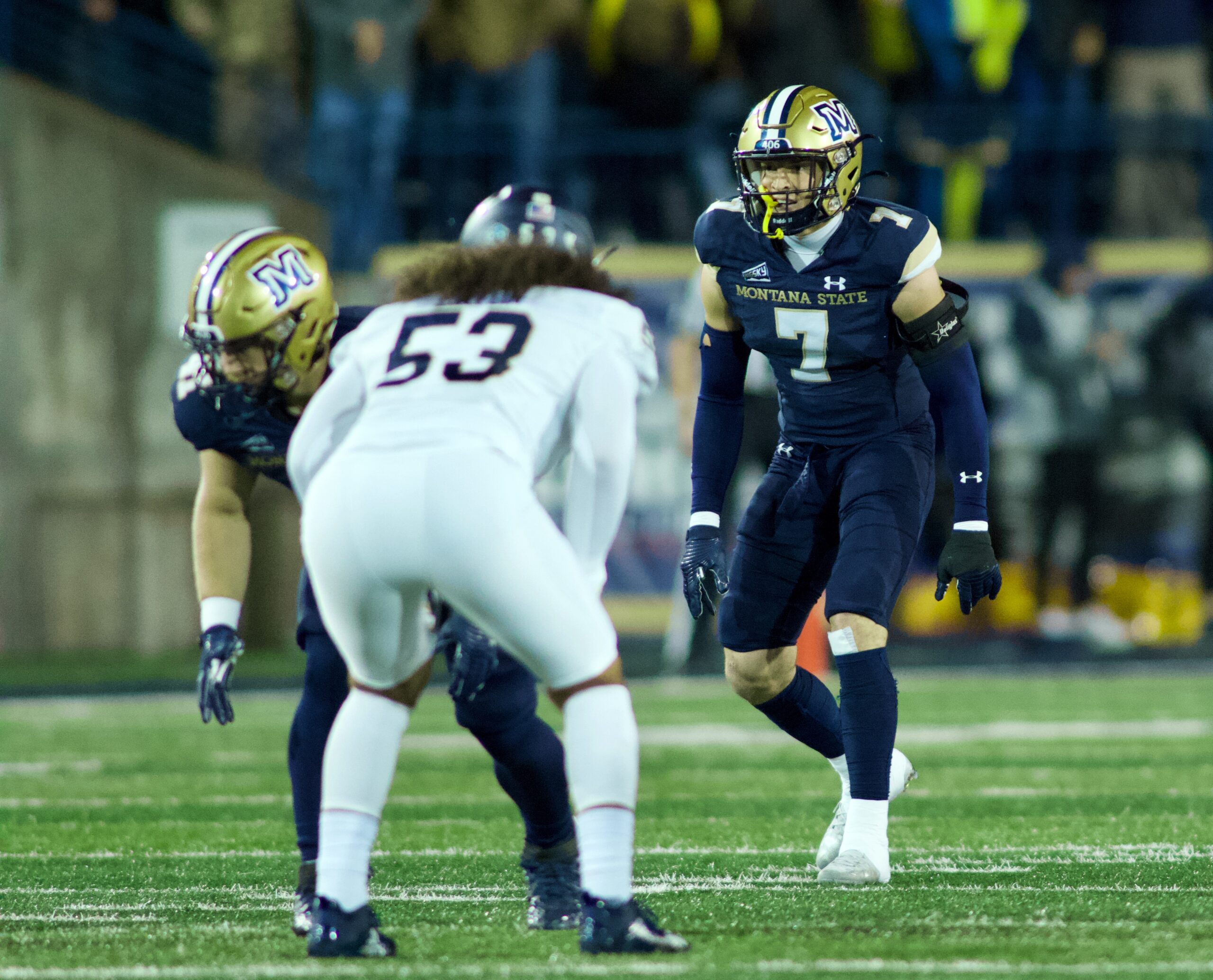
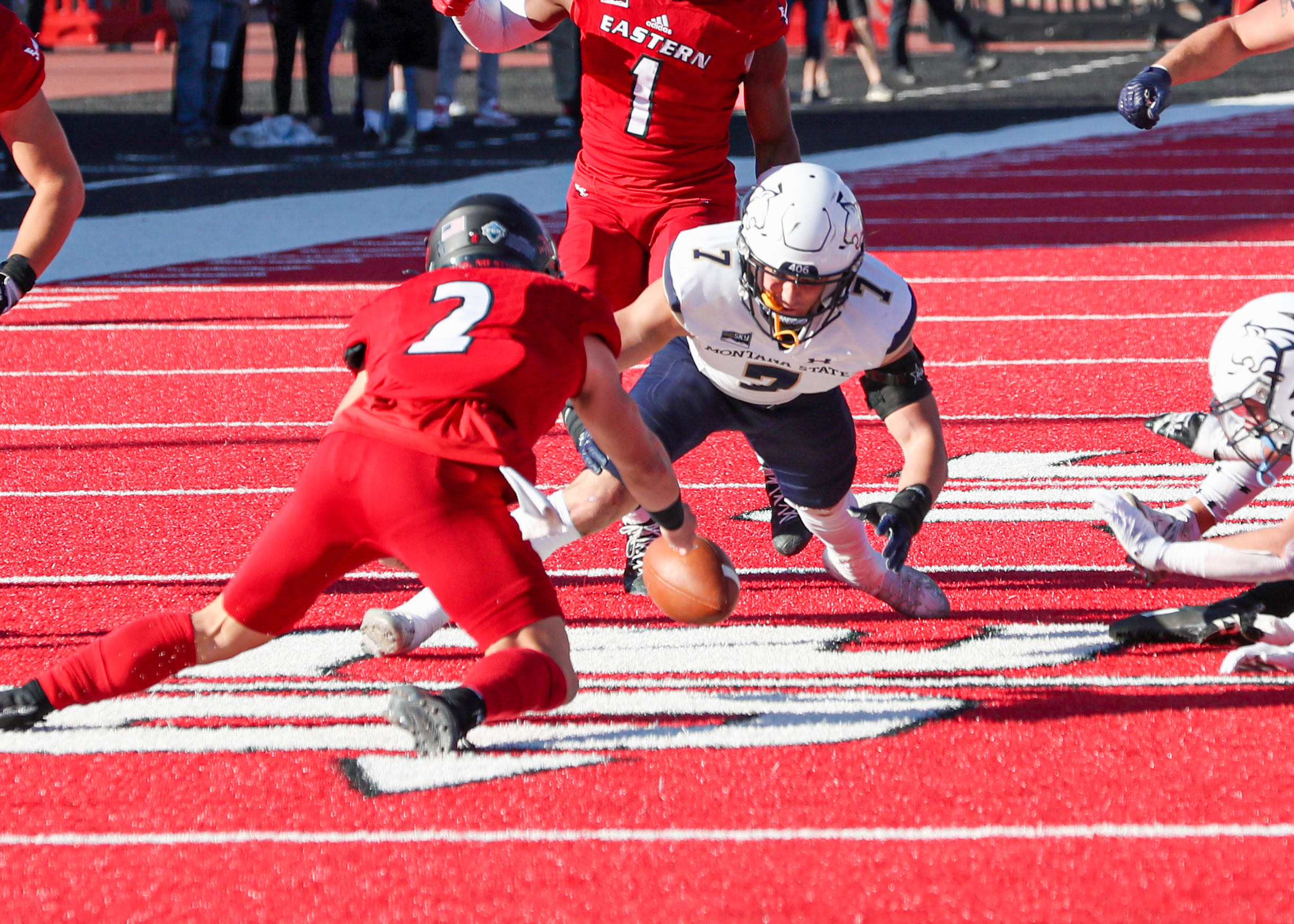
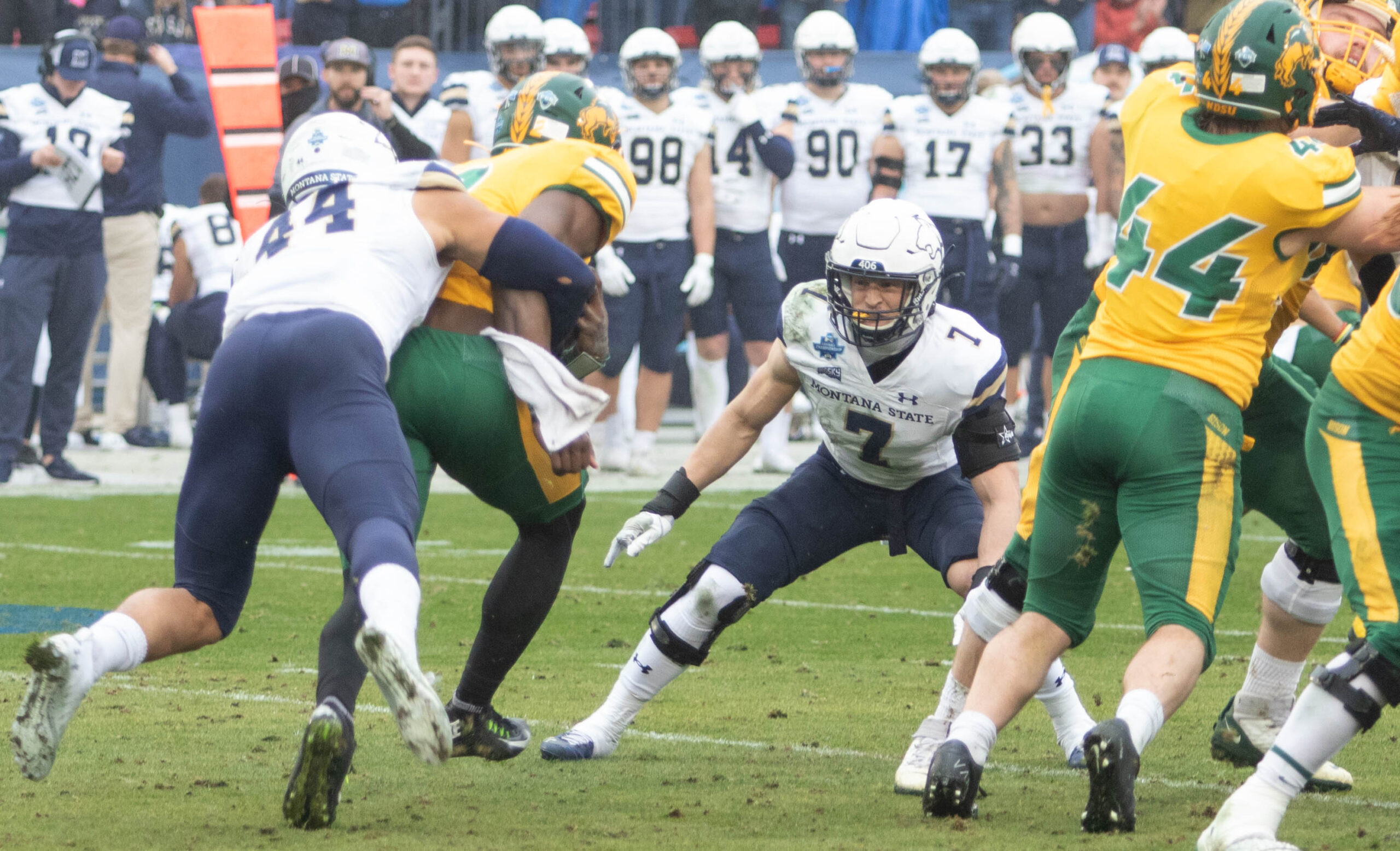
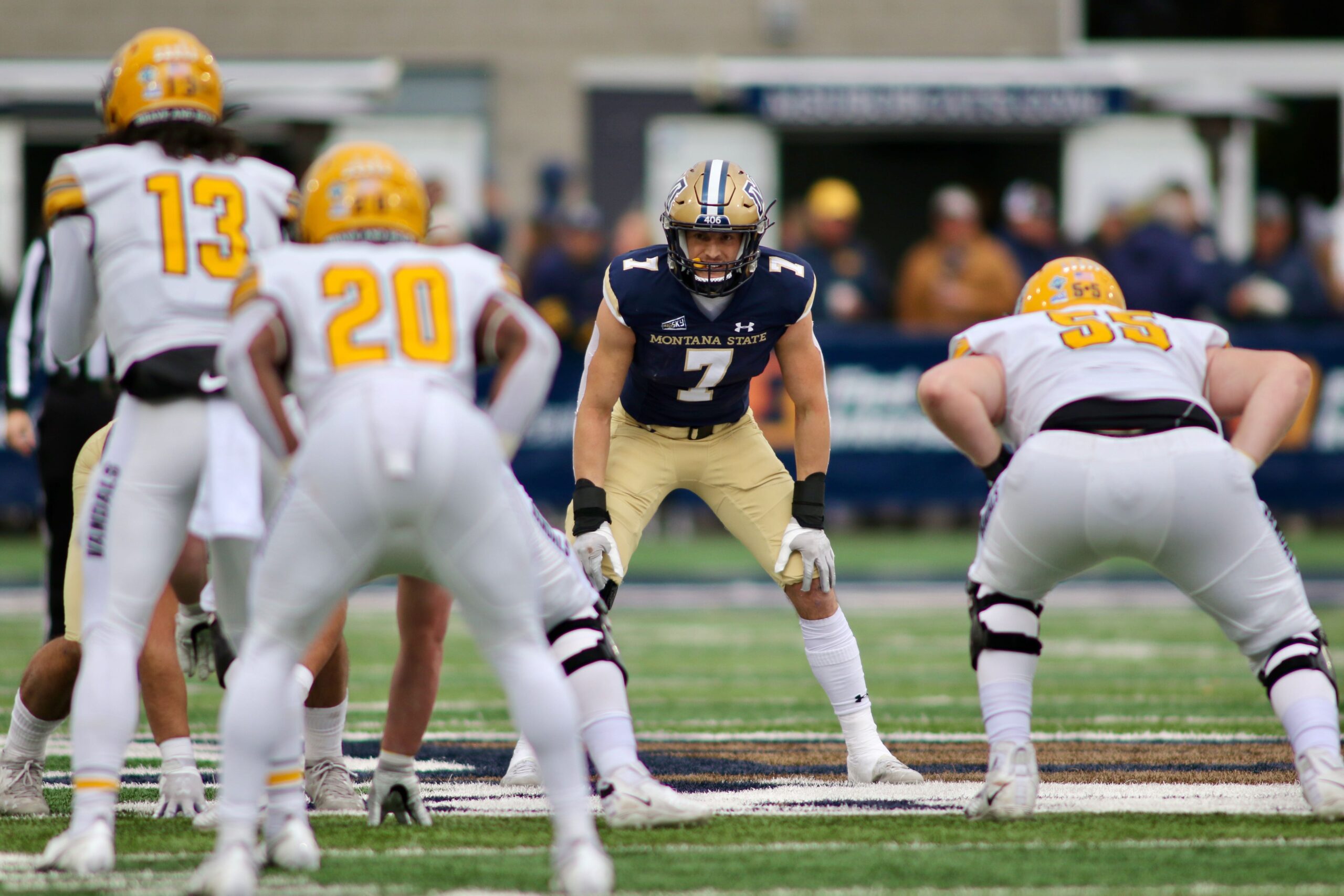
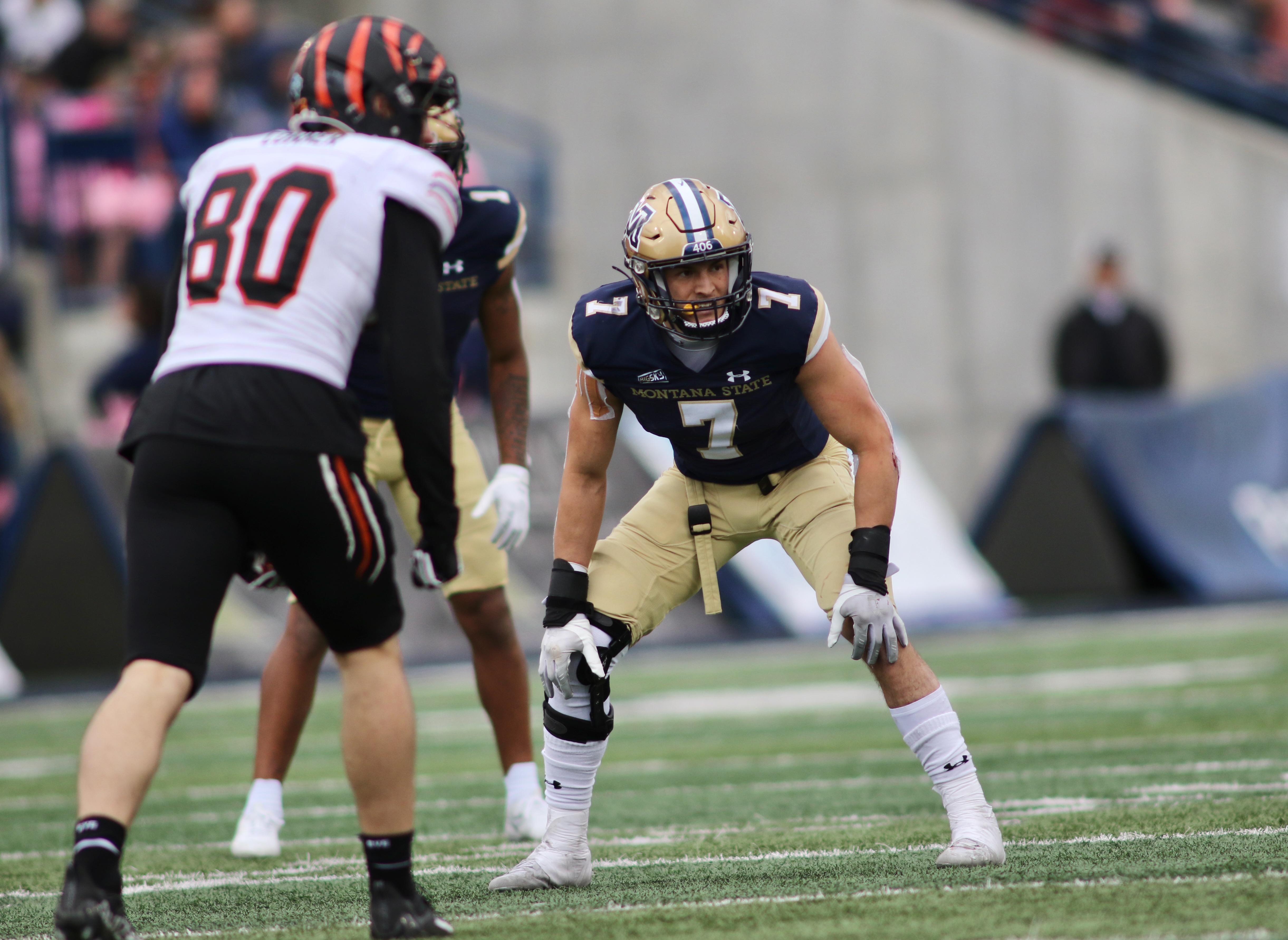
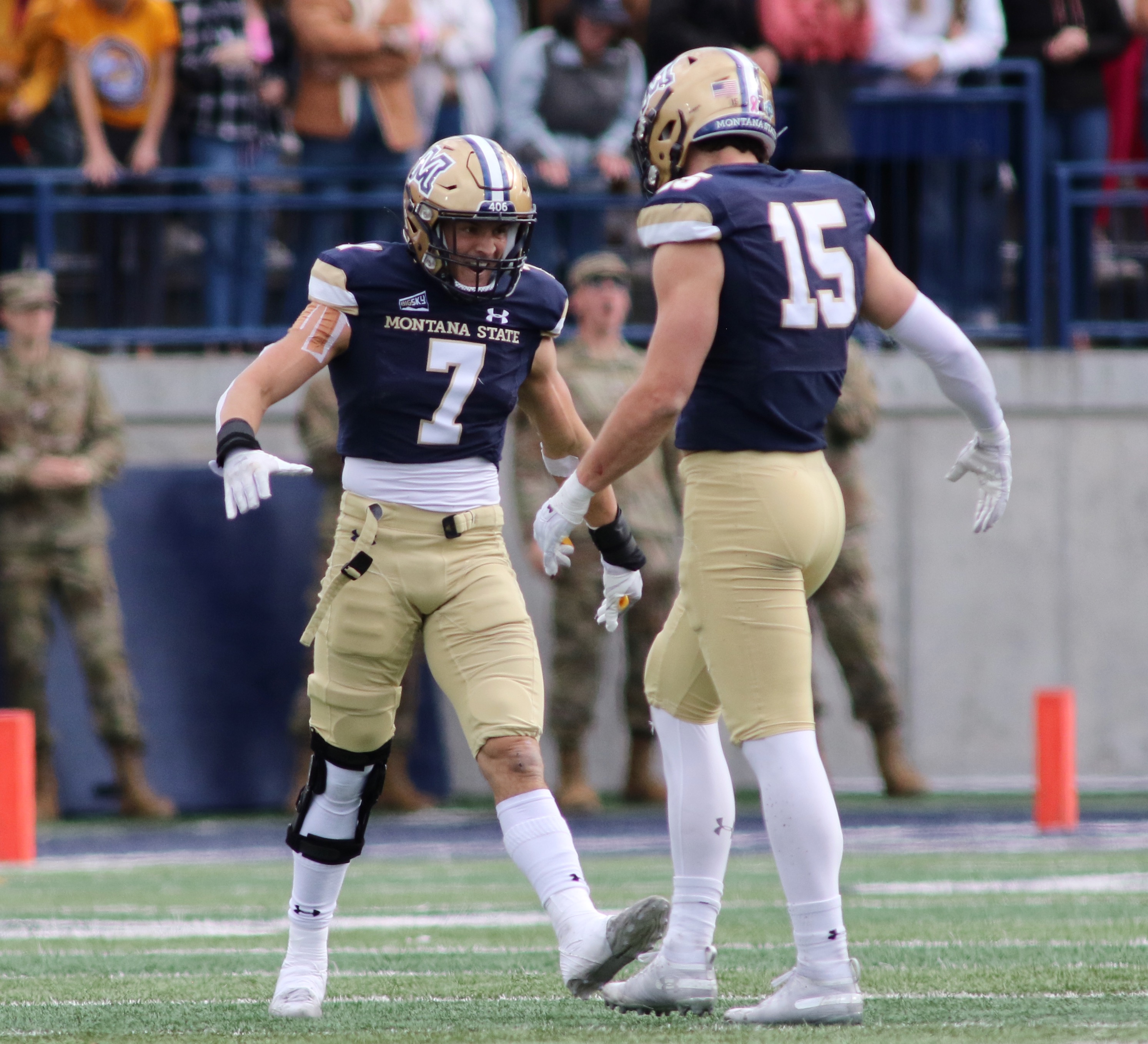
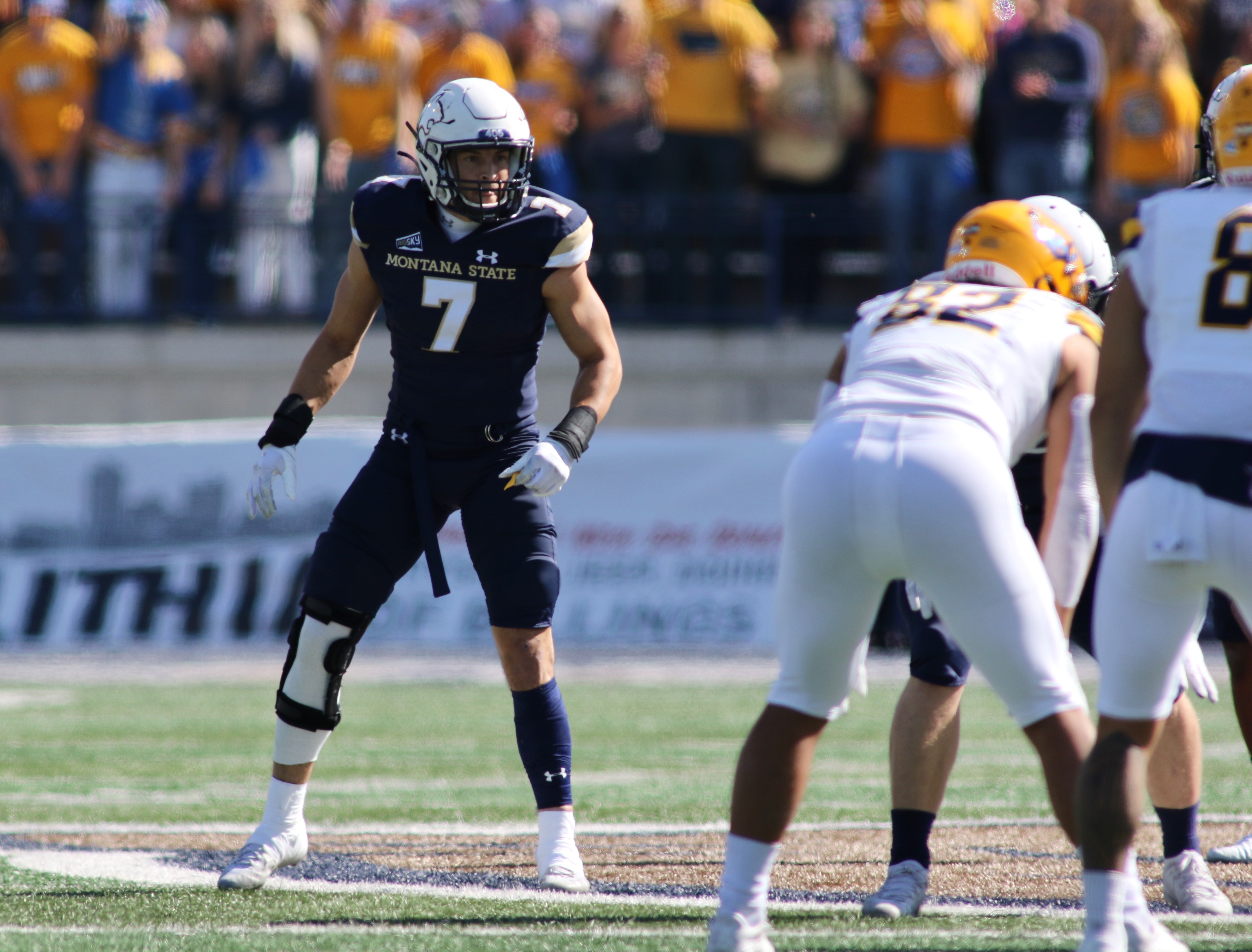
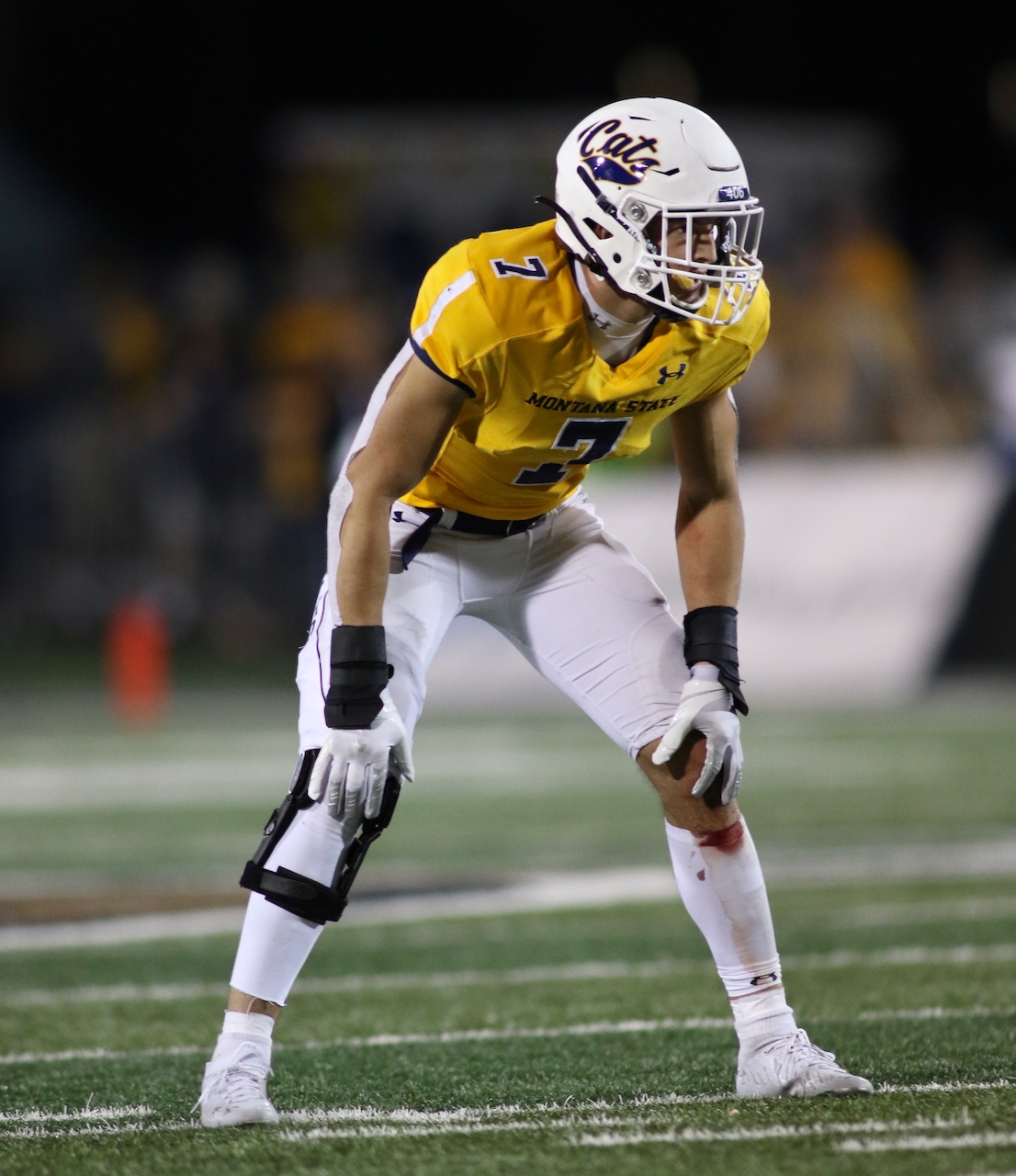
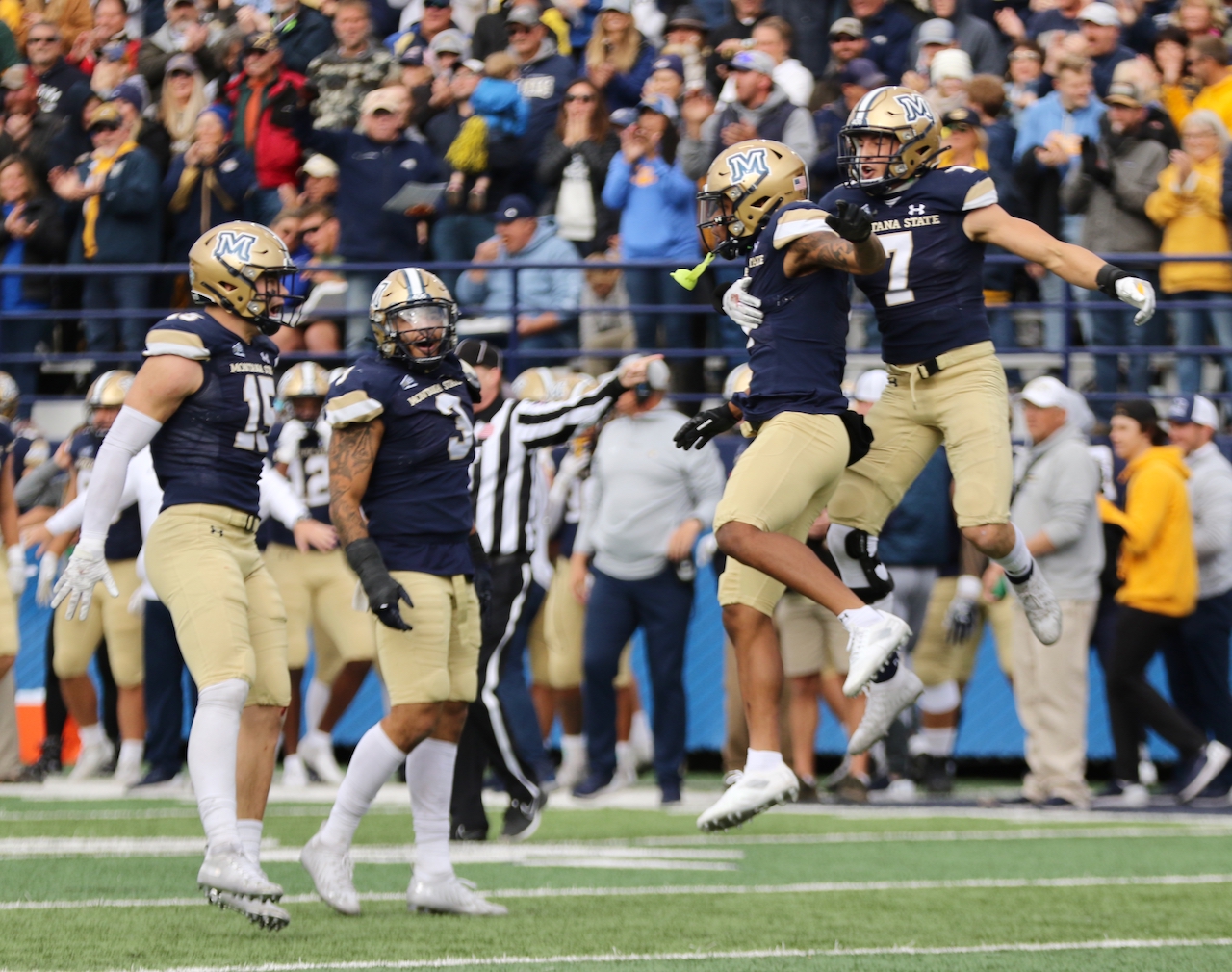

Montana State defensive back Ty Okada (7) breaks up a screen play vs. Northern Colorado/by Brooks Nuanez 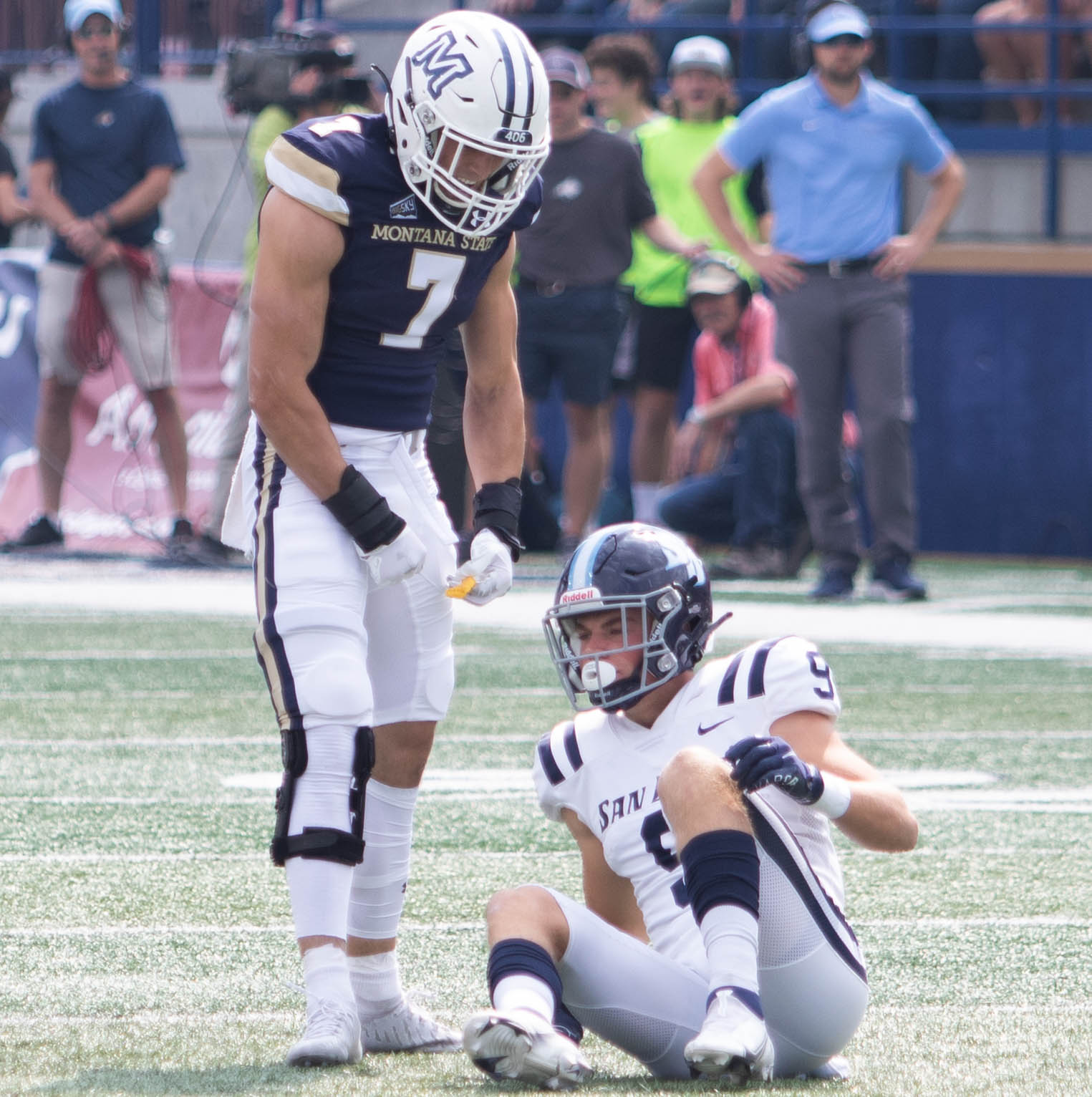
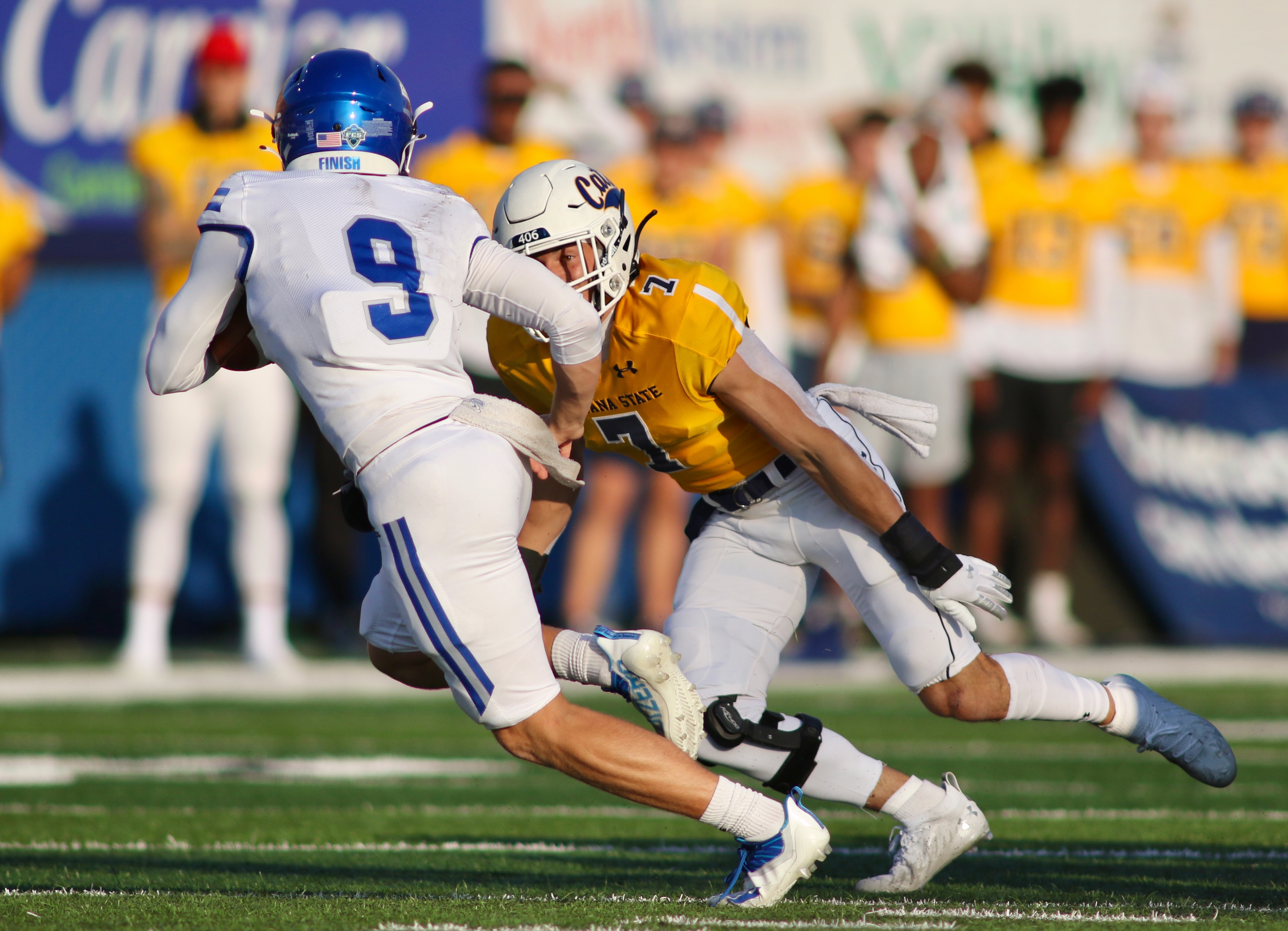
Montana State defensive back Ty Okada (7) tackles Drake quarterback Ian Corwin (9)/by Brooks Nuanez 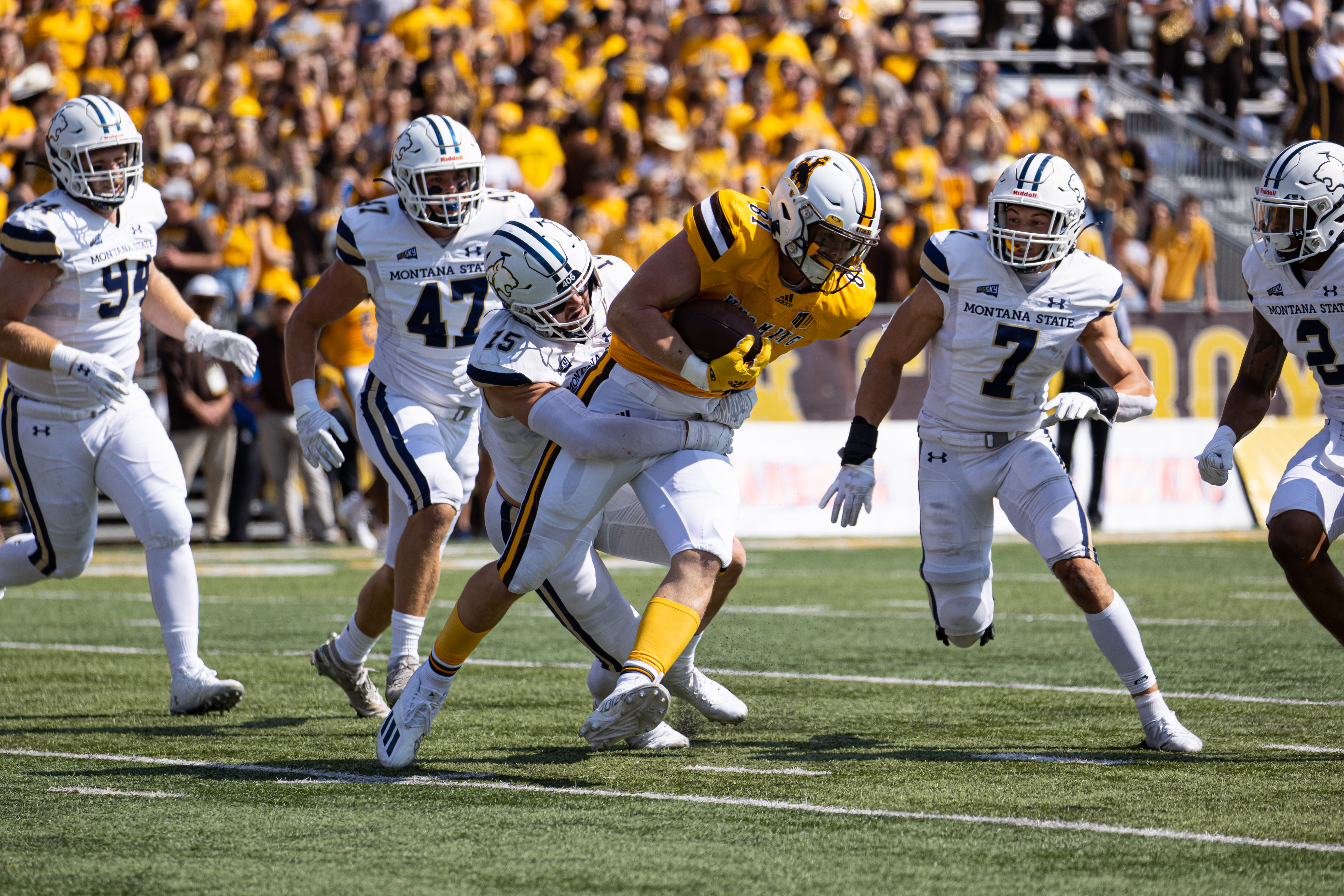
Montana State defenders, featuring linebacker Troy Andersen (15), tackle a Wyoming ball carrier/by Garrett Becker – Montana State Creative Services 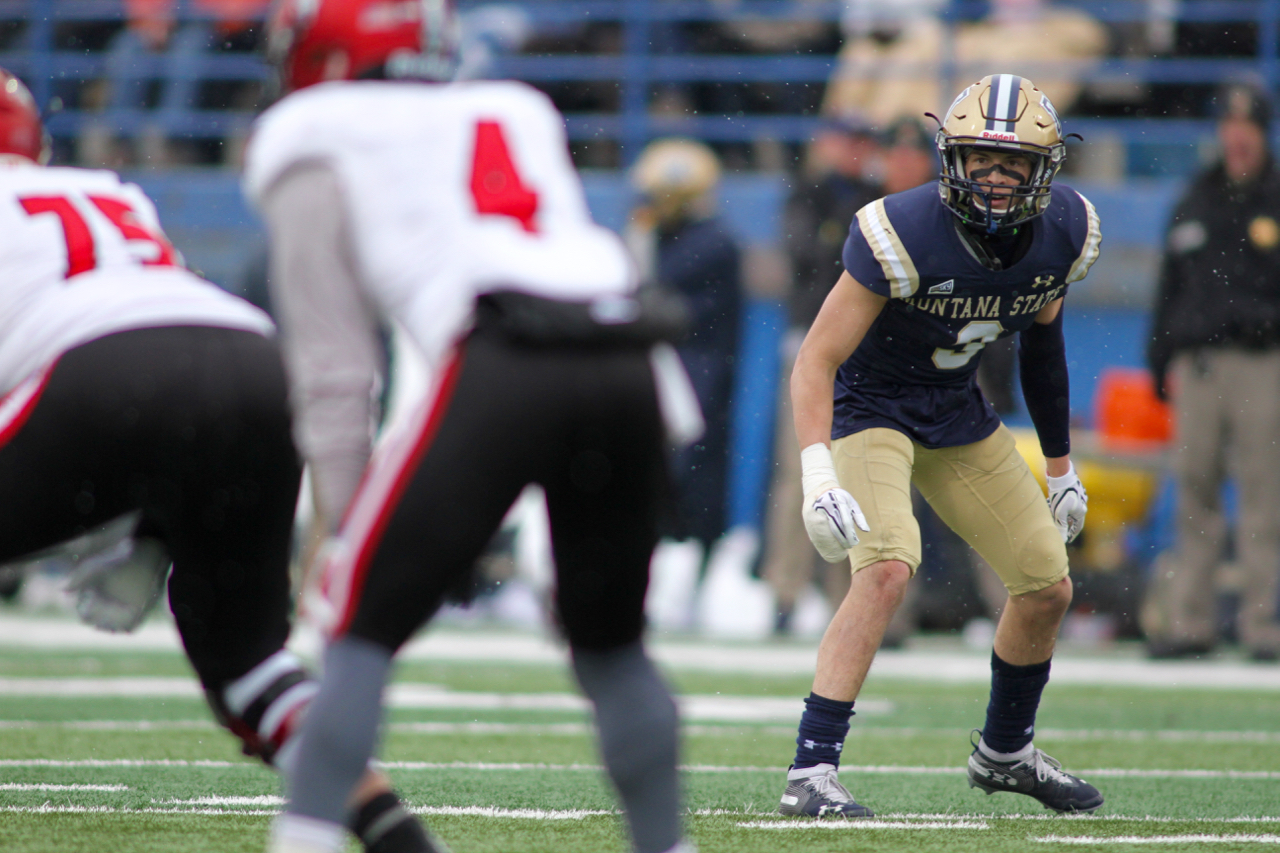
Montana State safety Ty Okada (3) in 2018/by Brooks Nuanez


